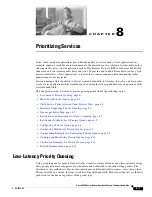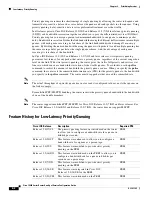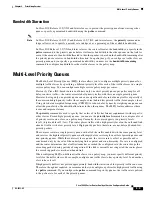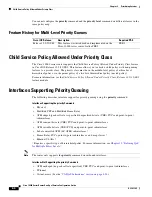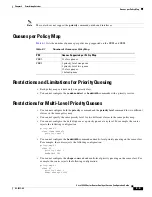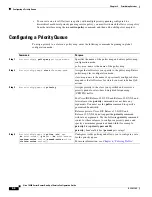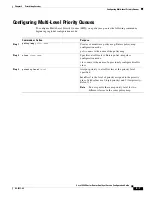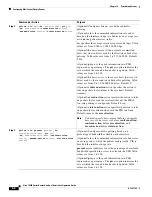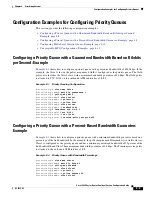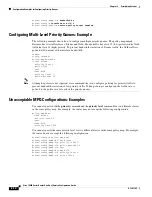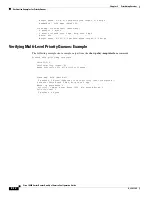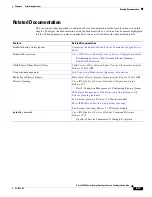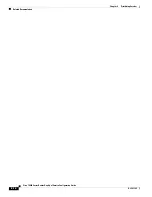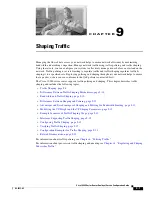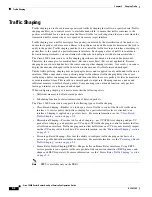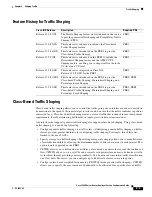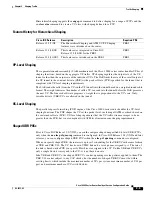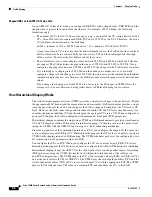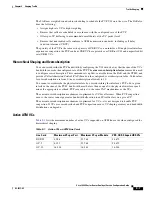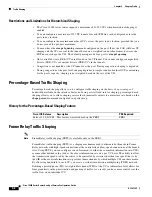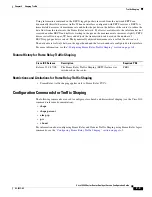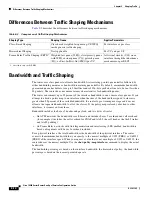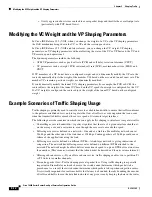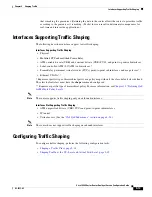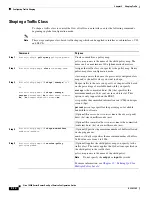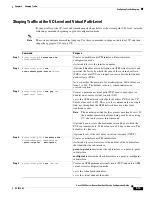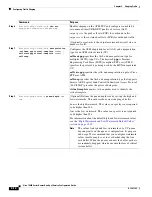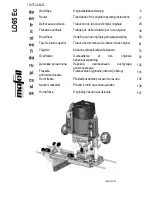
C H A P T E R
9-1
Cisco 10000 Series Router Quality of Service Configuration Guide
OL-7433-09
9
Shaping Traffic
Managing the flow of data across your network helps to ensure network efficiency by maximizing
bandwidth and avoiding congestion. Manage network traffic using traffic policing and traffic shaping.
Using these tools, you can configure your system to effectively manage issues before an overload on the
network. Traffic policing uses rate-limiting to regulate traffic and traffic shaping regulates traffic by
shaping it to a specified rate. Deploying policing and shaping throughout your network helps to ensure
that a packet, or data source, conforms to the QoS policies contracted for it.
The Cisco 10000 series router supports traffic policing and shaping. This chapter describes traffic
shaping and includes the following topics:
•
Traffic Shaping, page 9-2
•
Differences Between Traffic Shaping Mechanisms, page 9-10
•
Bandwidth and Traffic Shaping, page 9-10
•
Differences Between Shaping and Policing, page 9-11
•
Advantages and Disadvantages of Shaping and Policing for Bandwidth Limiting, page 9-11
•
Modifying the VC Weight and the VP Shaping Parameters, page 9-12
•
Example Scenarios of Traffic Shaping Usage, page 9-12
•
Interfaces Supporting Traffic Shaping, page 9-13
•
Configuring Traffic Shaping, page 9-13
•
Verifying Traffic Shaping, page 9-17
•
Configuration Examples for Traffic Shaping, page 9-21
•
Related Documentation, page 9-22
For information about traffic policing, see
Chapter 6, “Policing Traffic.”
For information about per-session traffic shaping and queuing, see
Chapter 18, “Regulating and Shaping
Subscriber Traffic.”

